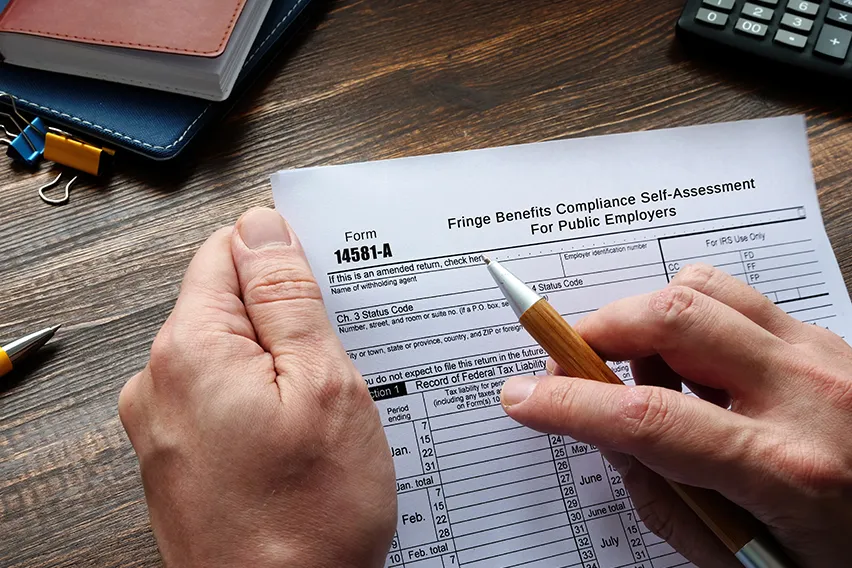What Are CIS Deductions? Meaning & Calculation

The construction industry is a very popular and lucrative business.
That being said, it can also be a financial minefield with different taxes, rules and regulations.
In the United Kingdom, there is the Construction Industry Scheme. This is a scheme that sets out and specifies rules that contractors in the construction industry must follow. It comes into play whenever they make payments to subcontractors for any form of construction work.
But what exactly is the Construction Industry Scheme? Let’s take a closer look.
Here’s What We’ll Cover:
Do All Workers Pay Tax Under CIS?
What’s the Difference Between CIS and PAYE?
What Is the CIS?
The Construction Industry Scheme, or CIS, is a scheme that is issued by His Majesty’s Revenue & Customs, or HMRC, in the United Kingdom.
The scheme specifies the set of rules and regulations that contractors within the construction industry must comply with. This is whenever they make any form of payment to a subcontractor for construction work.
It also applies to “deemed contractors”. These are organisations that don’t have a construction as their primary business. However, they spend a large amount annually on construction work.

How To Comply with CIS
Contractors and deemed contractors must complete these steps to be in line with CIS:
- Register with HMRC as a contractor.
- Verify the employment status of the subcontractors they hire and ensure they are registered with HMRC.
- Verify the tax status of the subcontractors.
- Make payments to the subcontractors that include deductions specified under CIS.
- Take the amount that is deducted from the payments and pay HMRC.
- Supply subcontractors with detailed payment and deduction statements.
- Send HMRC a monthly return statement.
- Maintain records of the payments and deduction which include:
- The gross amount, excluding VAT, of each payment that was made.
- The amount of any deductions.
- The amount, excluding VAT, of any material costs if the contractor made a deduction.
CIS Calculation Example
To use an example, let’s say that a contractor has verified a subcontractor and the CIS tax rate is to deduct 20%. The contractor may receive an invoice from the subcontractor that may look like this:
- Labour: £500 + VAT £100
- Materials: £200 + VAT £40
- Total Invoiced: £700 + VAT £140
The contractor would then need to report the following details to HMRC:
- Gross Amount: £700 – the total amount invoiced not including VAT
- Qualifying Materials: £200 – the qualifying materials stated on the invoice not including VAT.
- CIS tax to deduct:
- GA – QM = TA
- GA: Gross Amount of £700
- QM: Qualifying Materials of £200
- Taxable Amount: £500
- 20% of £500 = £100.
- GA – QM = TA
So the final taxable amount of £100 would be given to HMRC whilst the subcontractor would receive the remaining £740.
Calculating the CIS deduction is a relatively simple task. But this task can be made even easier with the help of accounting software such as FreshBooks.
Their easy-to-use double-entry accounting tool ensures accuracy. It also helps you to prepare easy to understand financial statements and reports.
Do All Workers Pay Tax Under CIS?
You should only pay tax under CIS if you are self-employed. It is up to the contractor to decide if their workers are employed or self-employed.
If a person works exclusively for one contractor and does not run their own business then they are likely to be regarded as an employee rather than self-employed.
This is the case even if the work arrangement is for a short time or they have an existing Unique Taxpayer Reference, or UTR.

What’s the Difference Between CIS and PAYE?
The main difference between CIS and PAYE is that on the Construction Industry Scheme you’ll consistently pay a fixed rate of 20% to HMRC. This is in comparison to PAYE where you pay the ‘correct’ amount of tax which is defined by your tax code.
You can also claim back certain expenses at the end of the year with CIS which you can’t do with PAYE.
The downside with CIS is the same as any form of self-employment where if you don’t work, you don’t make money. This is because there are no sick days or paid holiday days.
Key Takeaways
Every self-employed builder or contractor needs to choose between PAYE or CIS tax schemes. They both work in different ways and can both be very beneficial.
Are you looking for more business advice on everything from starting a new business to new business practices?
Then check out the FreshBooks Resource Hub.
RELATED ARTICLES

 What Is VAT Liability? A Beginner’s Guide
What Is VAT Liability? A Beginner’s Guide What Is the VAT Flat Rate Scheme for Small Businesses?
What Is the VAT Flat Rate Scheme for Small Businesses? What Is Import VAT and How Does It Work?
What Is Import VAT and How Does It Work? What Is Income Tax & How Does It Work?
What Is Income Tax & How Does It Work? Difference Between Flat Rate Vat Vs Standard Rate Scheme
Difference Between Flat Rate Vat Vs Standard Rate Scheme How Do I Pay My Self Assessment Tax Bill?
How Do I Pay My Self Assessment Tax Bill?